The UK is home to a variety of birds of prey, including some majestic species like the Red Kite and Golden Eagle. Whether you’re an amateur birder or have been studying British birds of prey for years, there’s always something new to learn about these incredible creatures. This blog post will explore the different types of British birds of prey, their habitats and distribution across the country, diet and hunting techniques as well as breeding habits and conservation status – so grab your binoculars! Let’s take a closer look at Britain’s birds of prey; from owls to kites, let us discover all that we can about our local raptors here in the UK.
Types Of British Birds Of Prey
Birds of prey, also known as raptors, are a group of predatory birds that have keen eyesight and sharp talons for hunting. In the UK, there are five main types of birds of prey: hawks, eagles, falcons, owls and harriers.
Hawks
Hawks can be identified by their broad wingspan and short tail feathers. They hunt small mammals such as rabbits or rodents during the day using their excellent vision to spot potential prey from high in the sky. Examples include Red Kites and Sparrowhawks.
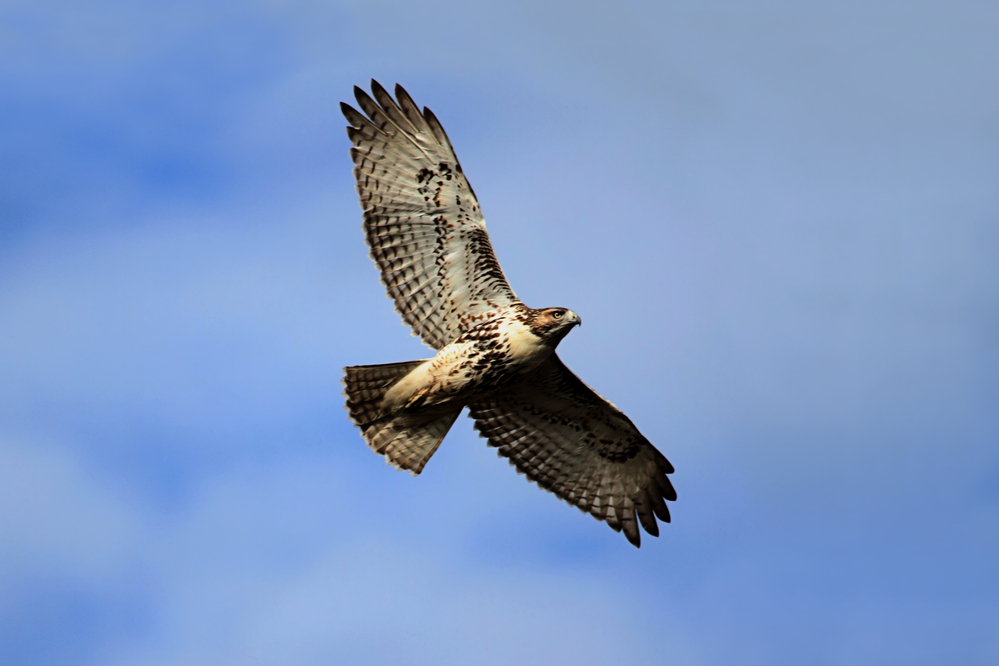
Eagles
Eagles are large birds with powerful wingspans that can reach up to 2 metres wide! They usually feed on fish but will also take other animals, such as hares or young deer, if they can catch them. The Golden Eagle is an example found in Britain’s uplands areas, while White-tailed Eagles inhabit coastal regions near rivers and estuaries.
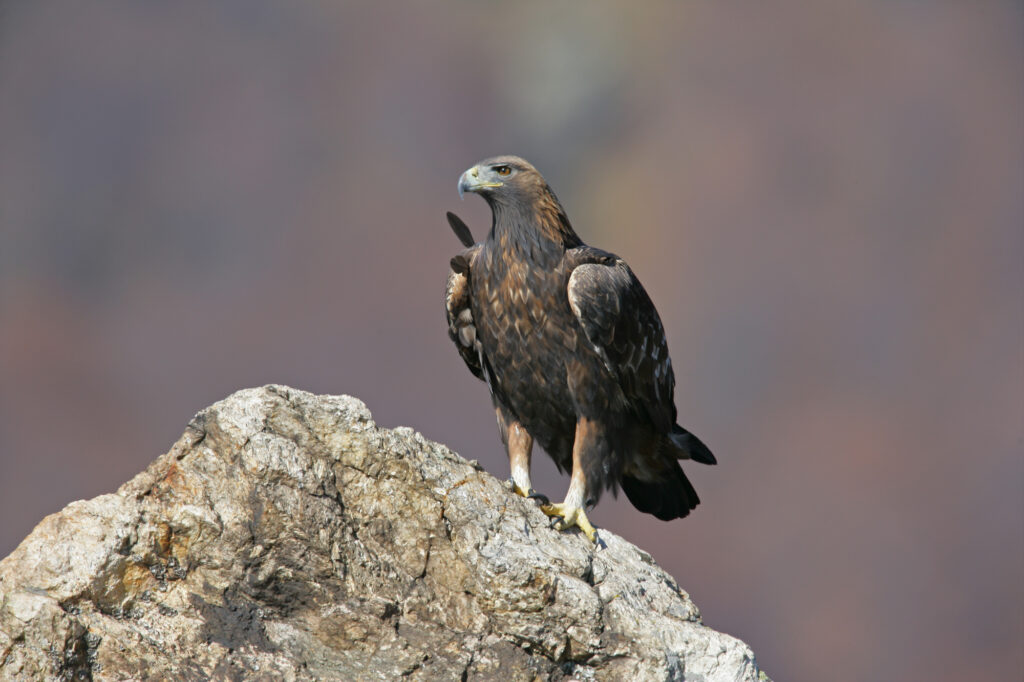
Falcons
Falcons have long pointed wings which help them fly at incredible speeds when chasing after their quarry – often small birds like pigeons or ducks. Peregrine Falcons are one species commonly seen in Britain, where they nest on cliff faces or buildings around cities like London or Edinburgh.

Owls
Owls have round heads with distinctive facial disks which help funnel sound towards their ears so they can locate hidden prey even in complete darkness. Tawny Owls live throughout most parts of England, while Barn Owls prefer open farmland habitats with plenty of voles to eat.
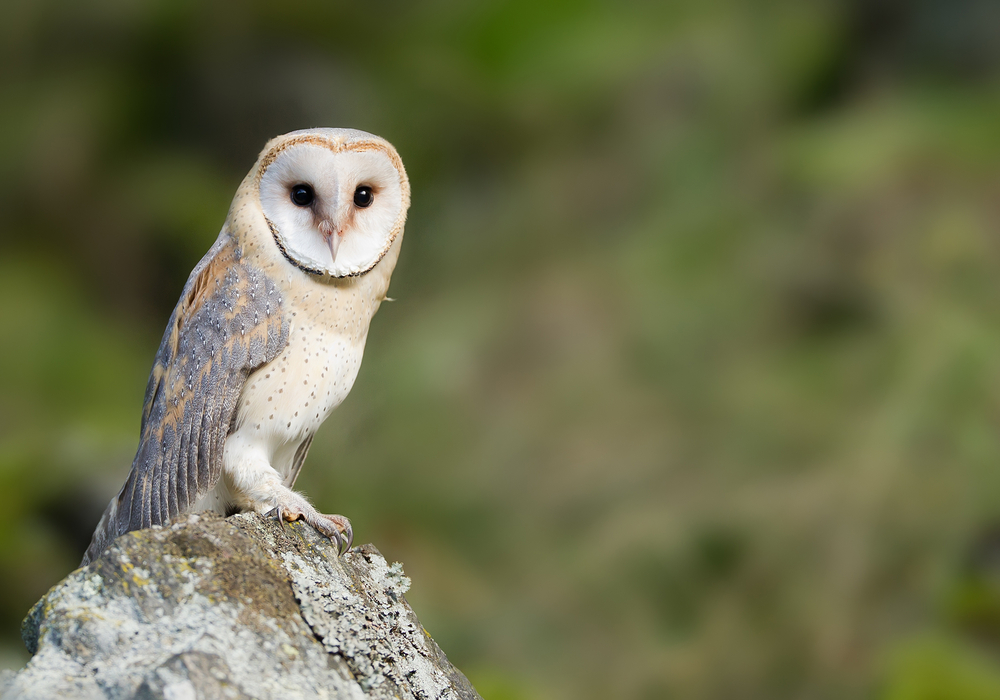
Harriers
Harriers tend to eat mostly rodents. They have long legs and long broad wings that aid their ability to fly for miles with ease. They usually hunt over open land or grassland and are not very aggressive with other predators. Unlike many other bird species, harrier numbers in the UK seem to be increasing and large breeding populations may now exist here.
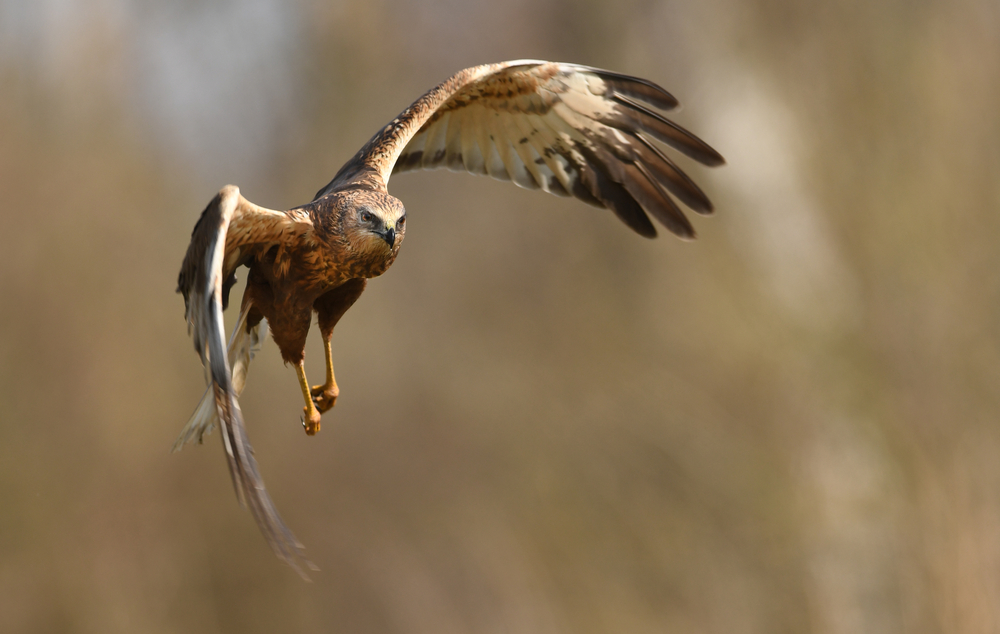
Habitats and Distribution
British birds of prey are found across the UK, with many species inhabiting a variety of habitats. These include woodlands, moorland, grasslands and wetlands. The most common type of habitat for these birds is open countryside or farmland where they can hunt easily. Some species prefer to live in more urban areas, such as parks and gardens, while others may inhabit mountainous regions or coastal cliffs. Let’s take a closer look at these preferred habitats below.
Woodland
Woodland habitats provide ideal conditions for UK birds of prey due to their abundance of food sources, such as small mammals and insects. Species like the tawny owl, buzzard and goshawk are commonly seen hunting in woodland areas throughout the country. They also use trees for nesting sites during breeding season, which provides them with protection from predators on the ground.
Moorland
Moorland is another popular habitat for these birds due to its wide open spaces that allow them to spot potential prey from high up in the sky when soaring above it, looking out for movement below them on the ground. Birds like hen harriers, merlins and peregrine falcons often hunt over moorland, but some will also nest here too if there’s enough cover provided by heather plants or shrubs growing amongst it.
Grassland
Grasslands are home to several types of UK bird of prey, including kestrels, who hover above this type of terrain searching for small rodents scurrying around beneath them before swooping down quickly to catch one in their talons mid-air. Buzzards can also be spotted gliding low over grasslands scanning intently below them, looking out for any unsuspecting animals moving about near bushes or hedgerows nearby that they could potentially target next as part of their diet too.
Wetland
Wetlands provide an important source of food supply all year round, so it is not surprising that marsh harriers have made this type of environment their home. Here they feed off frogs, fish and other aquatic creatures living within it, making wetland habitats essential for these raptors and other wildlife species.
Coastal Cliffs
Finally, coastal cliffs attract a variety of British bird life, including sea eagles. These birds use the strong winds blowing off ocean waves to help keep themselves airborne while searching large stretches of coastline on either side of cliff faces for possible meals swimming along the surface water below them – a perfect place to spot seafood delicacies like mackerel and herring.
Understanding the habitats and distributions of birds of prey in the UK is key to successful research and observation, so it’s important to know where they can be found. Next, we’ll explore what makes these birds unique and their behaviours.
Diet and Hunting Techniques
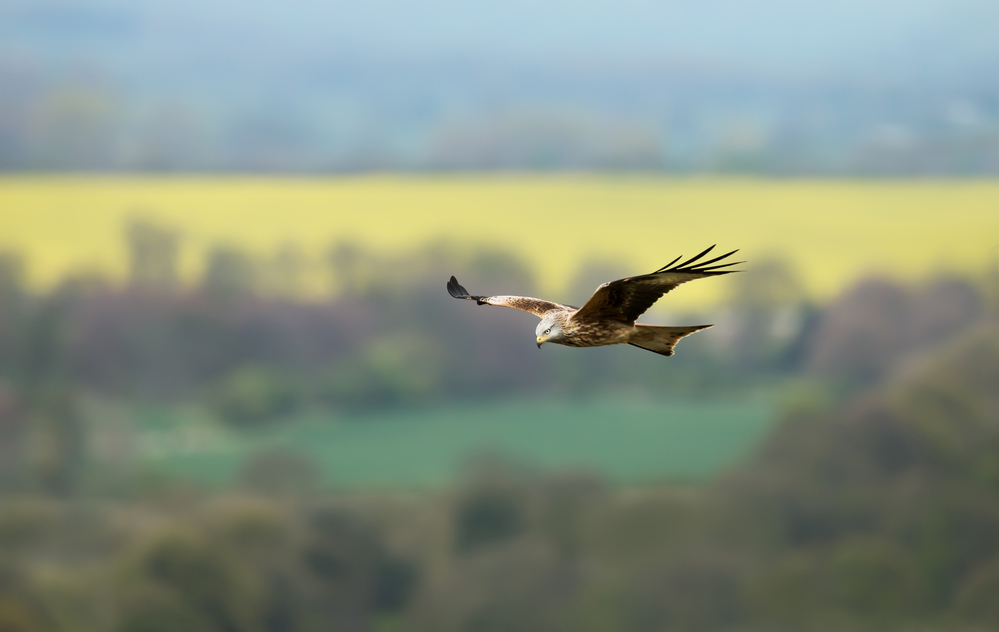
In the UK, there are over 40 species of birds of prey which vary in size from small falcons to large eagles.
The diet of British birds of prey is mainly composed of small mammals such as voles and mice, but they will also eat reptiles, amphibians, fish and insects. Some larger species may even take rabbits or hares if the opportunity arises. Birds typically hunt during daylight hours when their keen eyesight gives them an advantage over their prey.
Most raptors rely on a combination of soaring flight patterns to spot potential meals below them, followed by a rapid dive or stoop towards the ground to catch it with their talons before flying away again with its meal firmly grasped in its claws. This type of hunting technique is called ‘hawking’ and can be seen in many different bird species, including kestrels, harriers and buzzards.
Ospreys use a slightly different method; they hover high above water bodies, searching for fish before plunging into the water feet first to snatch up any unsuspecting victims below. Falcons are another group that employ hovering techniques while looking for food – this allows them to scan wide areas quickly for movement, which could indicate possible meals nearby.
Finally, some owls have adapted well enough to urban environments that they have become quite adept at scavenging around human dwellings for scraps left behind by people or pets, making these nocturnal hunters much more successful than those living solely in wilder habitats.
By understanding the diet and hunting techniques of British birds of prey, we can gain a greater appreciation for their unique behaviours and adaptations in the wild.
Breeding Habits
Birds of prey in the UK have a variety of breeding habits, depending on the species. Generally, they will choose an isolated area to build their nest or use an existing structure such as a tree hollow or rocky ledge. Nests are often made from sticks and twigs and lined with softer materials like mosses, grasses and feathers.
Courtship rituals vary between species but usually involve aerial displays by both male and female birds. The male may perform dives or circles around the female before landing close to her while calling out loudly. Once bonded, pairs will stay together for life unless one dies or is unable to breed due to injury or illness.
Incubation periods also differ among bird species but typically last 28-35 days, with both parents taking turns sitting on the eggs until they hatch. During this time, adults must be vigilant in protecting their young from predators, including other birds of prey that may try to steal eggs from nests if given the opportunity.
Once hatched, chicks require constant care for several weeks until they can feed themselves independently and eventually fledge (leave) the nest at about 8-10 weeks old when able to fly short distances under parental guidance. After leaving home for good, juveniles will remain dependent on their parents for up to 6 months before becoming fully independent hunters capable of surviving without assistance in wild habitats across Britain’s countryside landscapes.
By understanding the breeding habits of birds of prey in the UK, we can gain a better appreciation for their life cycle and how they contribute to our environment.
Conservation Status
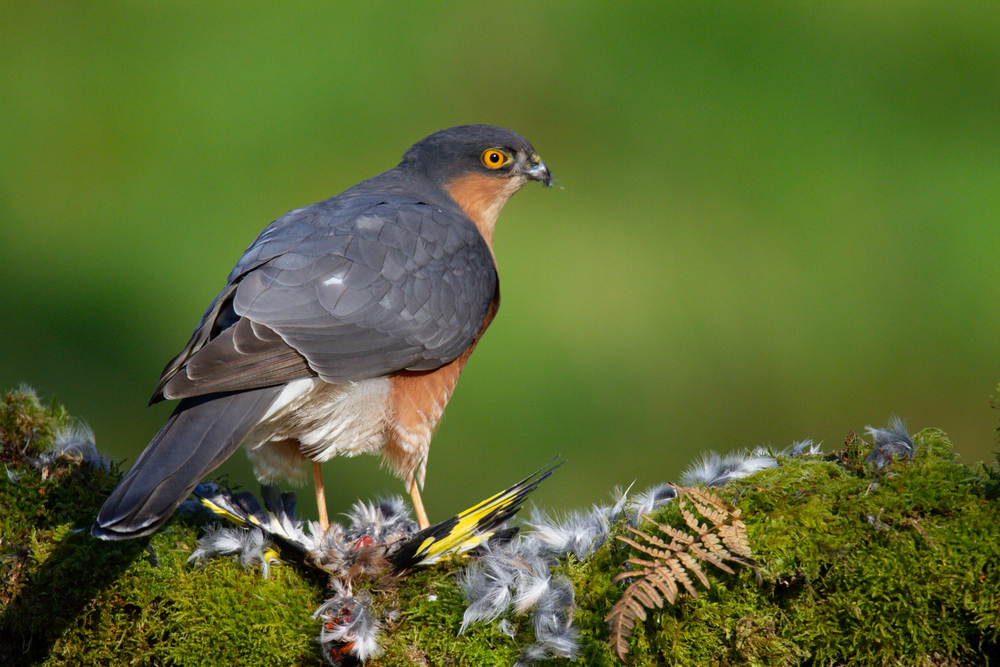
The conservation status of UK birds of prey is a complex issue. Human activities such as habitat destruction, illegal hunting and persecution are all major threats to these species. For example, the red kite has been persecuted for centuries in Britain due to its perceived threat to game birds and livestock, leading to its near extinction by the early 20th century.
Fortunately, there have been successful reintroduction programmes since then, which have helped increase their numbers significantly. The same can be said for other species, such as the white-tailed eagle, which was declared extinct in England in 1918 but has since seen a resurgence thanks to reintroduction projects across Europe.
However, despite this progress, there are still many challenges facing British birds of prey today. Habitat loss continues to be an issue, with large areas being lost or degraded due to urbanisation and agricultural intensification, meaning suitable nesting sites become increasingly scarce. This is particularly true for species like the barn owl, whose preferred habitats are often destroyed or converted into farmland, leaving them without adequate places to hunt or nest safely.
Illegal hunting practices also remain a problem, with some individuals targeting rarer species like peregrine falcons or goshawks for sport or food purposes, even though it is illegal under UK law. There have also been reports of poisoning incidents where certain pesticides have been used illegally on land inhabited by raptors leading to mass mortality events amongst bird populations in recent years too.
In response, organisations such as RSPB (Royal Society for Protection of Birds) work hard each year on campaigns designed specifically at protecting British birds of prey from these threats through education initiatives and lobbying government bodies for stricter enforcement against those who break wildlife laws relating to protected species like eagles and owls etc. Additionally, they run specific conservation efforts and projects aimed at restoring important habitats that provide vital resources needed by these animals throughout their lifecycles, such as food sources and nesting sites.
The conservation status of British birds of prey is a crucial element to consider when observing these species. Understanding their habitats and the threats they face can help us ensure that future generations are able to enjoy them in the wild for years to come.
Birds Of Prey FAQs
What is the most common bird of prey?
The most common bird of prey in the UK is the Common Buzzard (Buteo buteo). It has a wide range and can be found across England, Scotland, Wales and Ireland. The buzzard is easily identified by its large size, broad wingspan and distinctive mewing call. Its diet consists mainly of small mammals such as voles, mice and rabbits. It also feeds on insects, reptiles and carrion when available. The buzzard’s population numbers have been increasing steadily since the 1970s due to conservation efforts. They are now one of the most widespread birds of prey in Britain, with an estimated population of over 500,000.
How do I identify birds of prey in flight?
Identifying British birds of prey in flight can be a tricky task. To help, look for the bird’s silhouette and size, as well as its wingspan and shape. Pay attention to the colour of its feathers and any patterns or markings on them. Observe how it flies – does it soar gracefully or flap rapidly? Look out for talons or hooked beaks, which are common features among birds of prey. Finally, consider the habitat where you spot it – some species prefer open areas, while others may favour woodlands. With practice, you’ll soon become an expert at identifying birds of prey in flight.
How many UK birds of prey are there?
The UK is home to over 60 species of birds of prey, including hawks, eagles, falcons and owls. These birds are a vital part of the UK’s natural heritage and play an important role in maintaining a healthy ecosystem. The RSPB estimates that there are around 1 million individual breeding pairs across Britain. This includes rarer species, such as the red kite and osprey, which have been reintroduced into some areas after becoming extinct in the wild. With careful conservation efforts, these numbers can continue to grow in future years.
What is the rarest UK bird of prey?
The rarest UK bird of prey is the Red Kite (Milvus milvus). It was once widespread throughout Britain, but by the early 20th century, it had become extinct in England and Wales. In 1989, a reintroduction program began in England and Wales with birds from Spain and Sweden. The population has since grown to over 1,000 pairs across both countries. Red Kites are now a common sight in many parts of the UK, although they remain scarce compared to other species of raptors. They have distinctive forked tails and red-brown plumage, which makes them easy to identify when soaring above woodlands or open fields.
Conclusion
From the iconic golden eagle to the tiny merlin, these birds have been a part of our landscape for centuries and continue to be an important part of our natural heritage. With their impressive hunting techniques, varied diet and diverse habitats, British birds of prey provide us with a fascinating insight into wildlife conservation. Although many species face threats from human activities such as habitat destruction and illegal hunting, there is still much that can be done to protect them. By understanding more about these amazing animals and taking steps to conserve their populations, we can ensure that future generations will also get to enjoy watching these birds soaring through our skies.
Additional Resources
Sources and References
- How To Identify Birds Of Prey – nwt.org.uk
- Birds Of Prey – How To Spot Them – wildsheffield.com

Ash is a contributing author who has been writing about wildlife for as long as he can remember. He has a vast knowledge of many different types of animals, from the tiniest shrews to the great whales that live in the deepest oceans.
